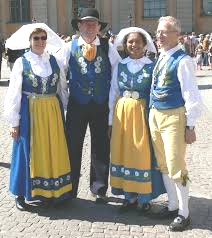
Known as Land of the Midnight Sun, Norway is a Nordic country also known for its rich culture of dance and music. The Nordic countries also include Denmark, Sweden, Iceland and Finland. These countries share a common legacy of folk dance and music. Most of its dance forms include the Polska from Sweden and the Pols and Springar from Norway. Similar to the Swedish Polska dance, the Pols is a gift from the Norwegian valleys in the eastern part of the hilly country. A typical couple dance, the Pols differs from the Polska in its rhythm, style, energy and area of performance. These are the common regional dance forms which developed before the 19th century. Let us find out more about the Pols dance in detail.
Most of the Nordic countries follow more or less a similar pattern in their various dance forms. The Pols dance from Norway has also developed from the neighbouring Scandinavian region. Pol is the generic name of ‘rundspolska’ dance, which means ‘clockwise turning’. Rhythmic variations differentiated various dance forms such as Rorospols, Finnsogspols and Springleik. Rorospols is a ‘bygdedansar’ or a genuine ethnic folk dance of the mining town of Roros in eastern Norway. All of these dance forms of Norway have been in existence from around four centuries. Most of the dances are either fast or slow. The fast paced lively dances became popular but the Pols from Roros had retained its original pace.
Pols, in its various forms is always a couple dance. The movements travel around a room similar to the Swedish Polska. Walking figures and clockwise and anti–clockwise turns define this dance. The dance forms differ both in motion and style. The slow–paced graceful movements have been replaced by fast, lively motion. The performers walk side by side with the inside hands held and the outer hands hanging by the sides naturally. A rhythm of ¾ meter is followed. The footwork of women is closely knit and is at a floor level. The turns are determined by men as they usually lead in the Pols. Random steps are followed to the sound of music. The clockwise and anti–clockwise turns are decided by men.
National costume of Norway is worn during performance of Pols. It is called the bunad. Men wear a jacket over a long–sleeved shirt and colourful pants. Women, on the other hand, wear long skirts and a veil on the head. Today, the performers wear any modern clothing that suits their styles and preferences.

Tied in with the oldest and untypical parts of the repertoire, Pols is a couple dance performed by both men and women. However, the male performers lead in most of the movements.


